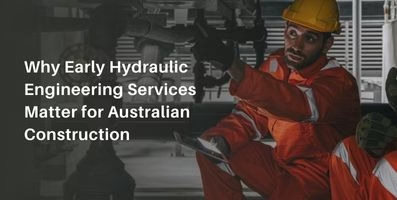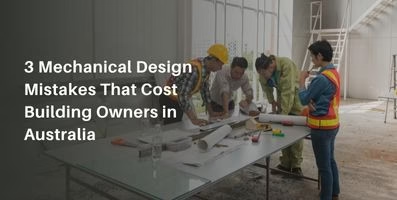Why Green Star and NABERS Ratings Depend on Smart MEPF Design

Australia’s construction industry is under growing pressure to deliver sustainable, high-performing buildings. Certifications like Green Star and NABERS are now essential for attracting tenants, securing finance, and meeting regulatory expectations. But achieving these ratings isn’t just about materials or solar panels—it starts with the smart design of mechanical, electrical, plumbing, and fire (MEPF) systems.
Without thoughtful MEPF engineering, even the most architecturally stunning project can fall short on sustainability benchmarks. At Decobu, we help developers and building owners unlock these ratings through tailored, high-performance MEPF design services.
What Are Green Star and NABERS—and Why Do They Matter?
- Green Star, developed by the Green Building Council of Australia (GBCA), rates buildings across categories like energy, water, indoor environment quality, and innovation.
- NABERS (National Australian Built Environment Rating System) measures actual building performance, particularly energy efficiency, water usage, waste, and indoor environment quality.
Why these certifications matter:
- Improve asset value and marketability
- Reduce operational costs through efficiency
- Meet ESG, climate, and sustainability mandates
- Attract green finance, tenants, and institutional buyers
Why MEPF Systems Are Central to High Ratings
1. Energy Efficiency Starts with Smart Electrical & HVAC Design
MEPF systems account for most of a building’s energy use. Key opportunities for Green Star/NABERS points include:
- High-efficiency HVAC systems with zoned control
- LED lighting with occupancy and daylight sensors
- Building Management Systems (BMS) for real-time optimisation
- Variable speed drives (VSDs) for motors and fans
2. Hydraulics and Water Efficiency Go Hand-in-Hand
NABERS and Green Star both assess water efficiency. MEPF-led hydraulic design can reduce potable water use via:
- Rainwater harvesting systems
- Efficient fixtures and appliances
- Water meters and leak detection controls
3. Indoor Environment Quality Depends on Air and Lighting Systems
Healthy buildings need:
- Ventilation rates aligned with AS 1668 and WELL standards
- Low-VOC materials and filters integrated into HVAC
- Glare-controlled, evenly distributed lighting systems
4. Commissioning and Controls Are Crucial
Both rating systems reward commissioned and monitored systems. MEPF engineers must:
- Ensure system calibration and proper setpoints
- Integrate smart meters, sub-metering, and logging
- Provide ongoing monitoring and reporting capability
How Decobu Adds Value to Green Star & NABERS Projects
At Decobu, our MEPF design approach is grounded in efficiency, compliance, and real-world building performance. Here’s how we help our clients boost sustainability ratings:
1. Designs Optimised for Ratings from Day One
We integrate Green Star and NABERS targets into early-stage cost planning and design—so buildings aren’t scrambling to ‘add on’ sustainability later.
2. Sector-Specific Expertise
From energy-intensive warehouse, retail, multi‑residential, and healthcare developments, we know which MEPF strategies move the needle in each sector—Check out our recent project
3. BMS, Submetering & Lifecycle Modelling
Our team incorporates controls and metering strategies that support ongoing monitoring—essential for high NABERS scores and long-term savings.
4. Collaboration with ESD Consultants
We work closely with your sustainability, architectural, and development teams to ensure systems are fully aligned with ESD reports and rating tools.
Common Mistakes That Lower Ratings (and How to Avoid Them)
Many projects underperform on Green Star or NABERS due to:
❌ Over-sizing HVAC systems
❌ Poor system zoning or lack of control
❌ Water systems without proper metering
❌ No allowance for commissioning or performance tracking
❌ Lack of coordination between MEPF and ESD consultants
With the right MEPF partner, all of these can be prevented.
Conclusion: Sustainable Ratings Start with Smart Engineering
Green Star and NABERS ratings are not afterthoughts—they’re design challenges. And your MEPF systems play a critical role in how your building performs, both on paper and in the real world.
With Decobu’s expertise, your next project won’t just be compliant—it will be cost-efficient, future-proof, and built to perform sustainably from the ground up.
📞 Ready to design for performance and ratings success?
Contact Decobu for MEPF engineering tailored to Green Star and NABERS outcomes.
FAQs
What is the difference between Green Star and NABERS?
Green Star rates the sustainability of a building’s design and construction, while NABERS measures actual building performance once it’s in use.
How do MEPF systems impact sustainability ratings?
Smart MEPF design improves energy and water efficiency, air quality, and system controls—key areas assessed by both Green Star and NABERS.
When should MEPF engineers be involved in a project?
From day one. Early-stage MEPF input ensures sustainability goals are built into the design—not added as an afterthought.
Found Interesting? Share the insights
Related Posts

Why Early Hydraulic Engineering Services Matter for Australian Construction
Why Early Hydraulic Engineering Services Matter for Australian Construction Hydraulic systems sit at the core of every building — managing water supply, drainage, stormwater, gas,

Electrical Design Engineering: What Sydney Developers Need to Ask Before Starting
Electrical Design Engineering: What Sydney Developers Need to Ask Before Starting Electrical design plays a much bigger role in modern buildings than many developers realise.

3 Mechanical Design Mistakes That Cost Building Owners in Australia
3 Mechanical Design Mistakes That Cost Building Owners in Australia Mechanical design isn’t usually the first thing people think about when planning a building —

Why Do Brisbane Projects Need Expert Fire Engineering Consultants?
Why Do Brisbane Projects Need Expert Fire Engineering Consultants? Introduction Fire safety is one of the most vital aspects of any construction project — yet

Why Building Services Engineering Matters in Every Project in Sydney
Why Building Services Engineering Matters in Every Project in Sydney When it comes to modern construction, it’s easy to focus on architecture and aesthetics. Yet,

Why Hydraulic Engineering Services Are More Than Just Pipes and Pumps
Why Hydraulic Engineering Services Are More Than Just Pipes and Pumps Hydraulic engineering is often thought of as just plumbing — pipes, pumps, and water

